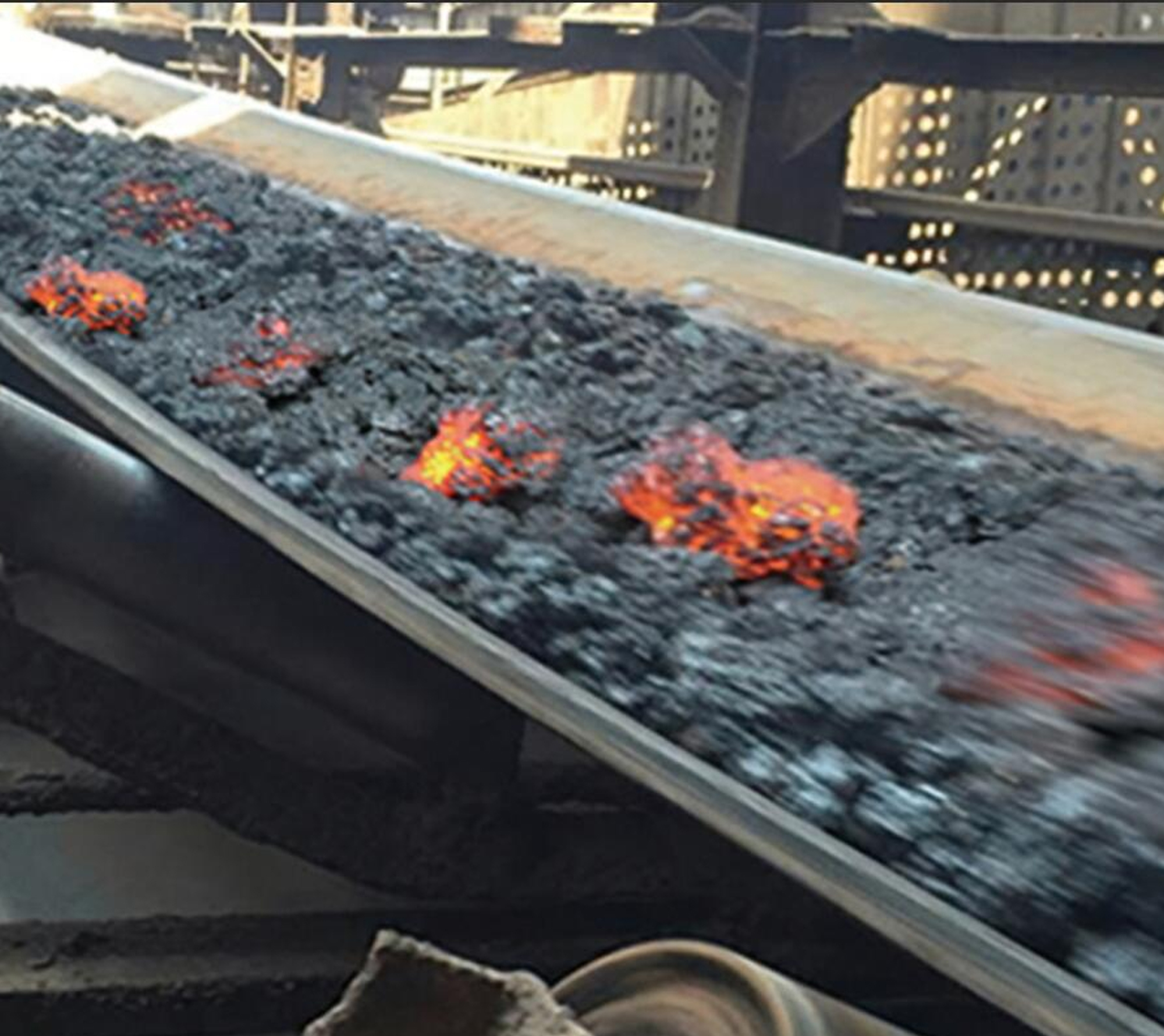
Heat Resistant Conveyor Belt
Fabricated from premium quality rubber, we manufacture Heat Resistant Conveyor Belts that not only assure high quality, but also are well suited for heat resistance applications. These are suitable for critical operations like hot sintered ore, hot pellet, hot clinker, hot chemical, fertilizer, hot cement etc.
The life of these belts depends on the construction of belt and temperature of conveyed materials. Apart from this, speed of conveyor, wear properties of materials, any chemical actions and size of materials also affect the life of these conveyor belts.
Heat resistant conveyor belt is available in three different types of carcass namely, steel cord, nylon and Polyster. With tensile strength varying between 100 – 6.000N/mm and belt width within 300-2200mm, steel cord belts are available in 50m and over, while fabric belts are
How to select the right Heat Resistant Belt:
>> Surface temperature of the belt varies with the type and size of the material being carried. Like large lumps (sintered ores, coke), which allow air to circulate, the belt surface would be cooler than the lumps.
>> In case of powdery or similar materials such as cement, alumina, carbon black etc. there is almost no temperature difference between material and belt surface. Therefore, while selecting a belt, it is necessary to know not only the temperature of the material to be carried, but also to have an accurate idea of the surface temperature (the belt will be operating at).
Rubber cover in this type of belt is available in three types, T1, T2 and T3. The low temperature T1 rubber cover allows temperature range on materials within 70° -150° or 200° C while the belt surface temperature ranges between 60° - 100° C With its heat hardening type feature, this rubber cover is suitable for low or medium temperature materials which are abrasive like coke, sintered products etc.
T2 and T3 are allow temperature range of materials within 100° - 200° or 250°C. T2 is heat softening type, possesses almost non crack cover and is suitable for hot powdery materials and high temperature materials which are medium abrasive like sintered ore products, cement clinker etc.
T3 is excellent wear resistant cover under high temperature and is suitable for lumpy materials or high temperature materials which are very abrasive like coke, sintered ore products etc.
For the User
Temperature of the material being transported and the belt's surface temperature vary according to the material and shape. For instance, when materials have a temperature of 150°C (such as coke or sintered ore) and have a relatively small contact area, belt's surface temperature could remain at 60°- 80° C. In contrast, when powdered material like cement is being conveyed, the material and belt surface temperature do not differ so greatly. The lifetime of the heat resistant belt is largely affected by the belt's surface temperature during operation.
Characteristics of Heat Resistant Belt
>> Rubber cover and carcass should not deteriorate due to heat.
>> Rubber cover on carcass should maintain excellent properties, even at high temperatures and good adhesion to form one unit, even when they are exposed to high temperatures.
The surface temperature of heat resistant belt varies with the material type, belt speed, loading rate and size depending on circumstances. In order to select the proper heat resistant belt, it is necessary to consider not only the temperature of the material to be conveyed, but also the surface temperature of the belt.
Restrictions on the Heat Resistant Belt
SBR heat resistant belt should not be used when:
>> Powdered material is over 70°C.
>> Strong acid or alkaline is used
>> Oil products and oil-stained substances are used.
>> The operation site or the materials require flame-resistant belts.
EPDM Heat Resistant Belt:
EPDM heat resistant belts should not be used when:
>> Powdered material is over 180°C
>> Oil products and oil-stain other than vegetable oil are present
>> Location of the materials requires flame resistant belts.
HEAT RESISTANCE
| Cover Type | Cover Grade | Tensile Strength | Elongation at break | Abrasion Loss | General Application | Ref. Standards |
| Heat Resistance | HR | 125 | 350 | 250 | Suitable for Transporting hot material (upto 125 C for coarse & 100 C for fine material) | As per Intt. Standards & BIS-1891 (Part 11) |
| SHR(T1) | 125 | 350 | 250 | Suitable for Transporting hot material (upto 150 C for coarse & 125 C for fine material) | ||
| SHR(T2) | 125 | 350 | 250 | Suitable for Transporting hot material (upto 180 C for coarse & 150 C for fine material) | ||
| UHR(T1) | 100 | 300 | 250 | Suitable for Transporting hot material (upto 250 C for coarse & 200 C for fine material) | ||
| UHR(T2) | 100 | 300 | 250 | Suitable for Transporting hot material (upto 350 C for coarse & 300 C for fine material) | ||
| UHR(T3) | FOR UHR(T3) PLEASE CONTACT THE COMPANY |

